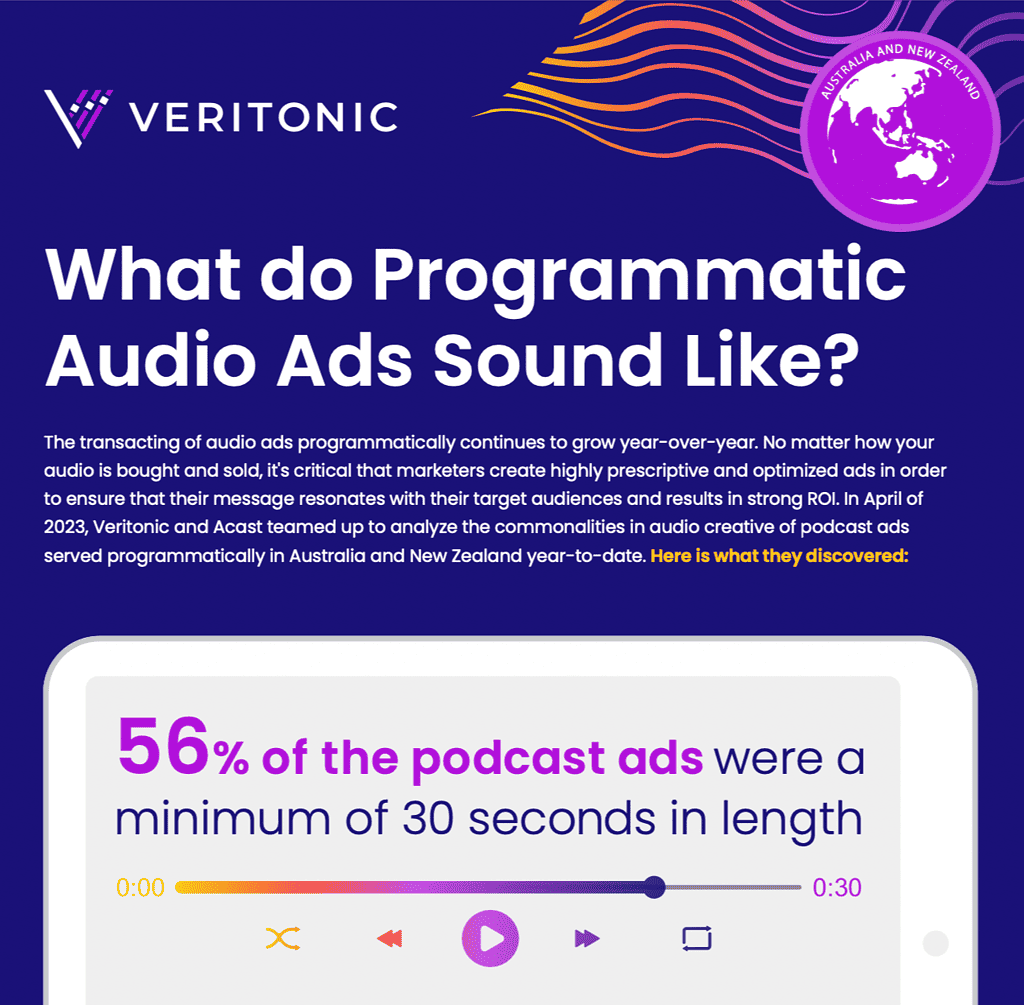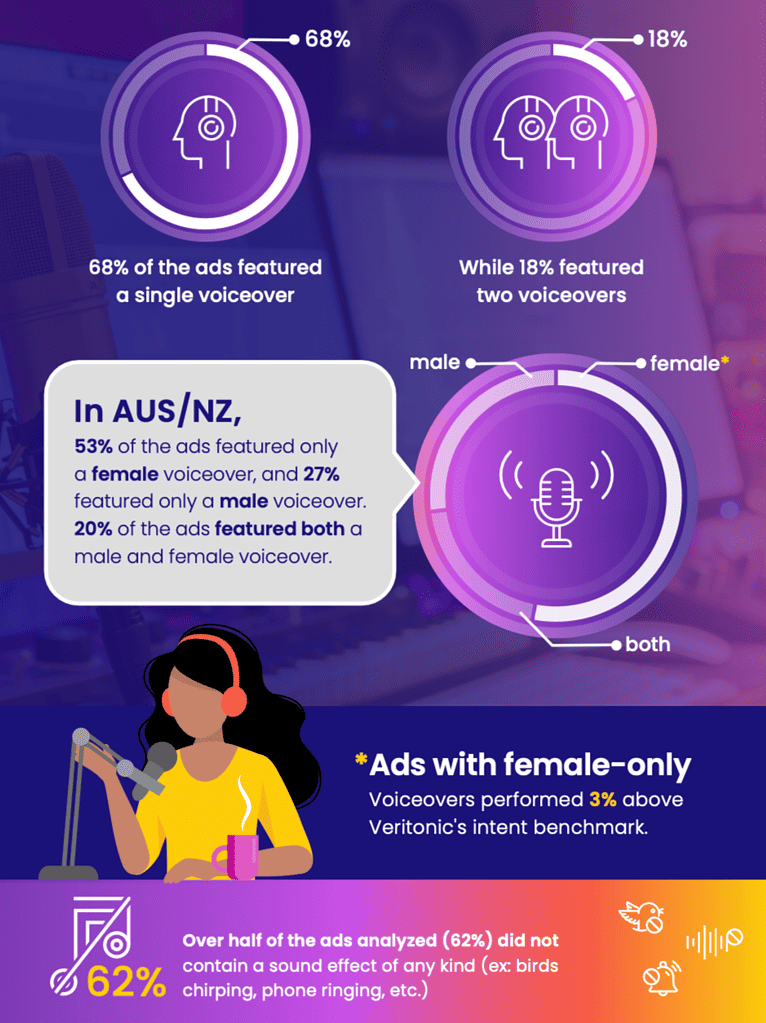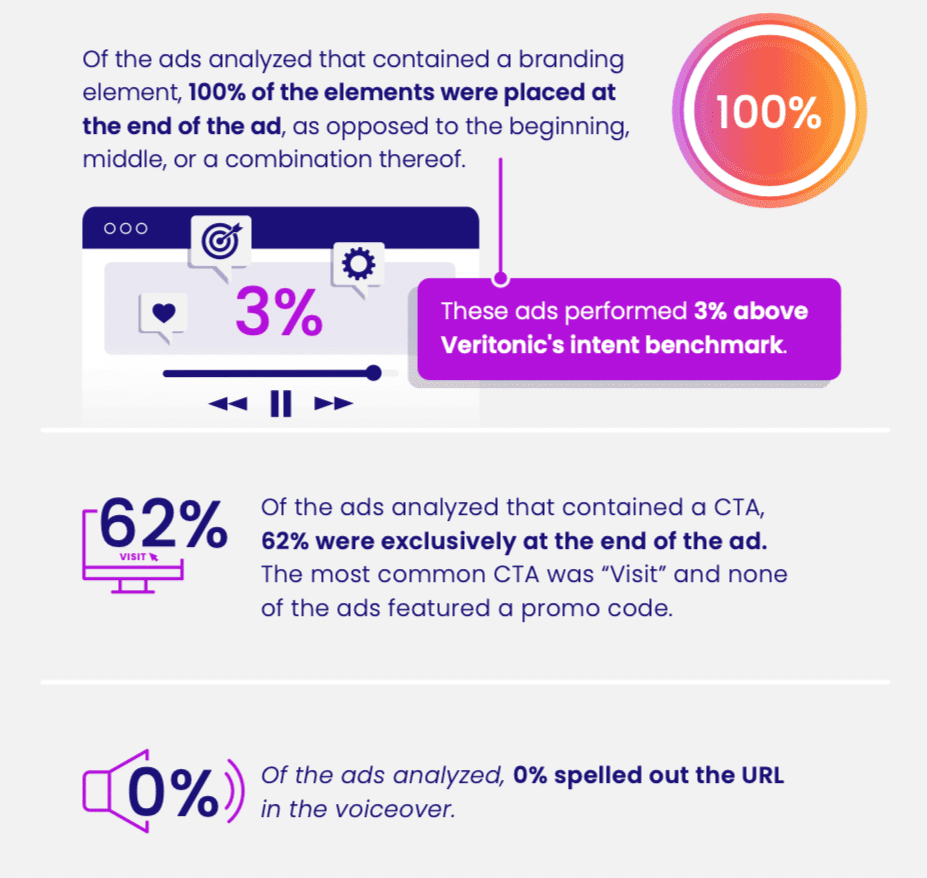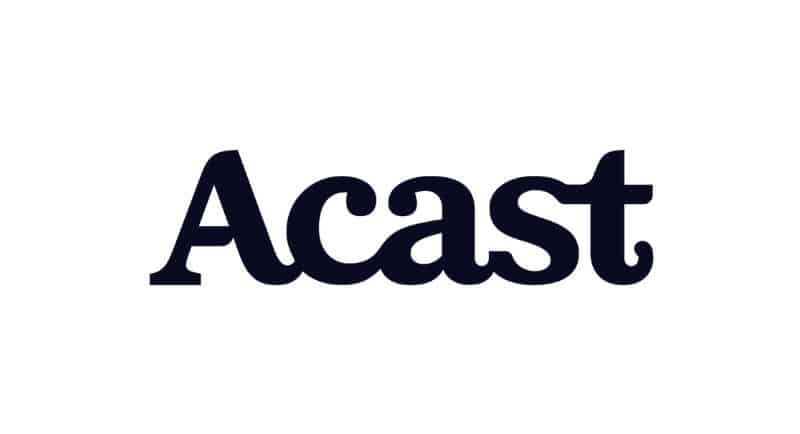Acast and Veritonic, the industry’s comprehensive audio analytics and research platform, have partnered to bring new data to market around the commonalities – and divergence – of audio creative on podcast ads served programmatically.
In addition to identifying these global overlaps and points of difference, the goal of the research was also to help media buyers identify strong tactics and best practices in programmatic podcast advertising across three key media markets: the US, Australia and New Zealand, and EMEA.
Together, the companies sourced and analysed podcast ads transacted programmatically with the independent podcast company and spanning various industry verticals, including: automotive, tourism, retail, healthcare, entertainment, and more.
They then identified the common threads and differences in the creative executions by region by examining themes like ad length, number of voiceovers, gender of voiceover, use of sound effects, call-to-action placements, and more.

Elli Dimitroulakos, global head of ad innovation at Acast, said: “As an industry there is still a lot of myth-busting to do around programmatic ad buying. At Acast, we firmly believe that programmatic advertising should not be a rigid experience for the media buyer, podcast host, and certainly not the listener.”
“Podcast advertising is effective because it’s a seamless part of the listening experience and that shouldn’t change based on how a transaction occurs. Programmatic ads can – and should – have creative elements that enhance the listener experience and brand relationship.”
Henrik Isaksson, Acast managing director for Australia & New Zealand, said: “Acast has pioneered automated buying in podcasting for a long time and it’s an area of our business in Australia that is growing very fast. There is no difference in quality in an audio ad bought directly via our sales team or one that is traded in an automated fashion.
“A large share of digital ads are traded programmatically in Australia and as we continue to invest in partnerships and technology we stay true in our mission to support podcasters’ hard work no matter how big or small they are.”

According to the research, across all markets the majority of ads were a minimum of 30 seconds in length. This was most predominant in the US and EMEA regions which resulted in 80% and 73% of the examined ads, respectively. The Australia and New Zealand market trailed slightly behind with 56% of programmatic ads running at least 30 seconds long. The remaining 44% in the market were 15 seconds in length.
All three markets also reflected similarities in the use of single voices for the voiceover content. The US led the way with 86% of programmatic ads in the study using a single voice for the voiceover. EMEA and Australia and New Zealand were most similar with 66% and 68% of programmatic ads using a single voice for the voiceover, respectively.
However, when it came to gender detection in voiceover content, dissimilarities across the markets presented themselves. In the US, half of ads analysed featured a female voiceover, 47% of ads featured a male voiceover, and the remaining 3% featuring both male and female voice.overs Looking at ads that ran in Australia and New Zealand, 53% of the creatives featured a female voice over, but just 27% a male voice, and 20% contained both a female and a male voiceover.

In near equal numbers, the three regions all used sound effects in slightly less than the majority of programmatic ads, indicating that this may be a newly emerging trend in the space. According to the study, sound effects including birds chirping, phones ringing, engines revving, and more were used in 40% of programmatic ads from the US, 38% from Australia and New Zealand, and 33% in EMEA.
Scott Simonelli, CEO of Veritonic, said: “Hope is not a strategy; it’s no longer enough for a brand to create an audio asset and simply hope it’ll move the needle. Having confidence that your marketing efforts and investments will pay off is crucial, especially in today’s economy.
“With audio reaching more than 214M adults in the U.S. monthly and having a 36% higher impact on memory than video, marketers need to be leveraging creative testing solutions like the Veritonic platform to ensure they are putting their best audio creative forward, regardless of how the ad itself is purchased or served.”
